Results 1 to 10 of 15
Thread: Joseph Elliot stub tail
-
07-27-2018, 10:34 PM #1
 Joseph Elliot stub tail
Joseph Elliot stub tail
Joseph Elliot first appeared in the Sheffield directories in 1822 but there are trade advertisements dating to 1795. His corporate mark was granted in 1805. This 13/16 near wedge razor with fancy spine, dating to the 1820's, is restored to its original crocus finish. The original horn scales were broken through the pivot and repaired using 2 steel pins to reinforce the break. The scales were very dry and had lost most of their color. Neatsfoot oil and black dye were used to bring them back to life. The original lead wedge and collars were also used in the restoration.
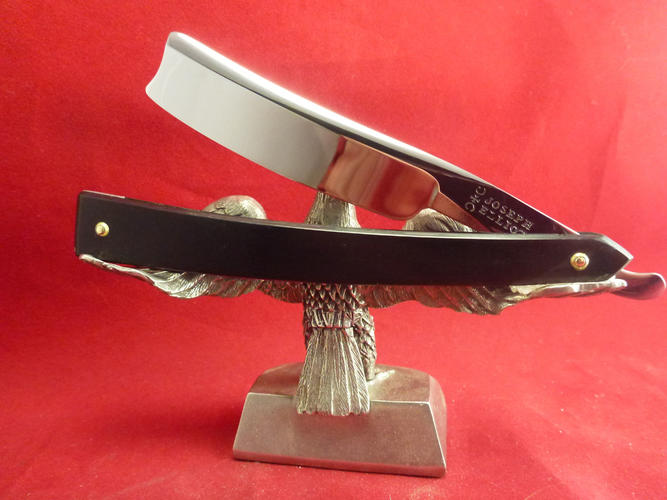
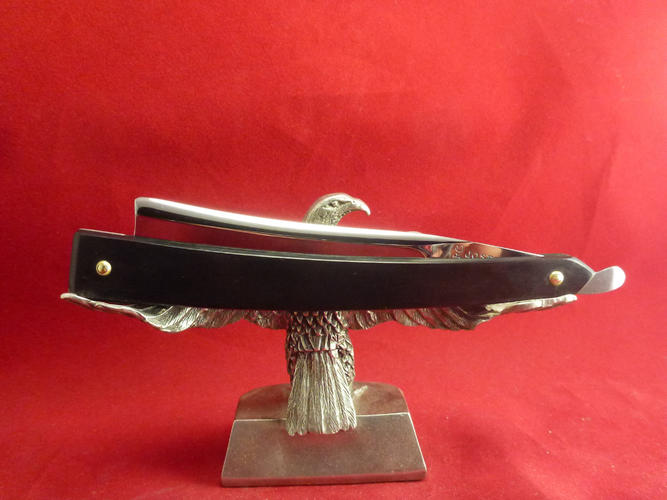
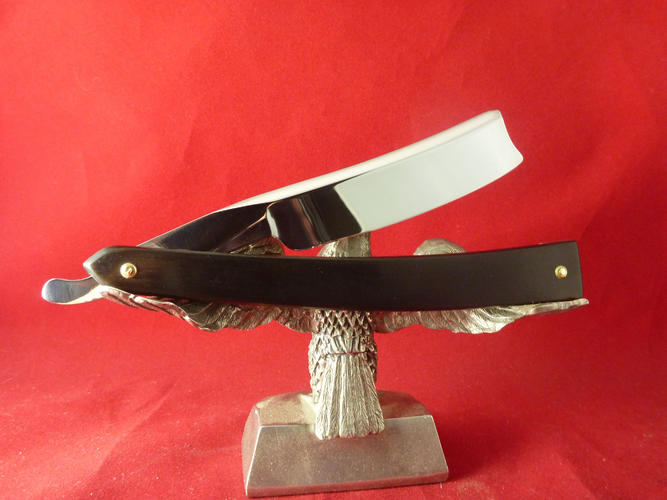
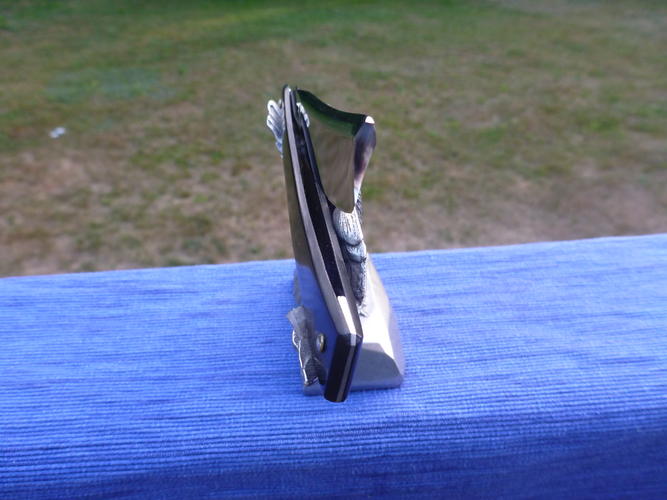
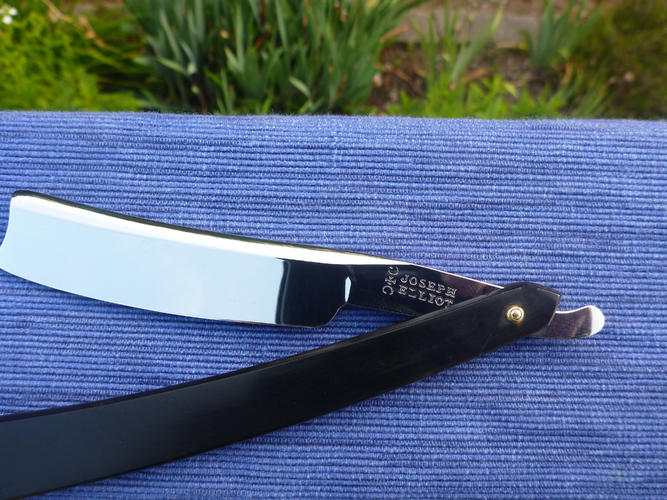
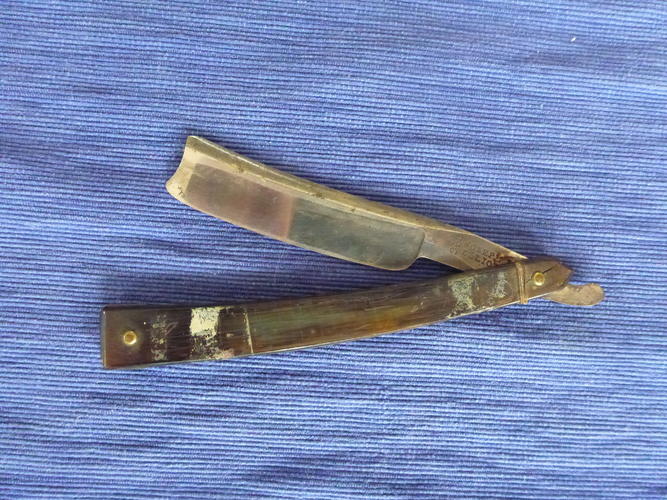
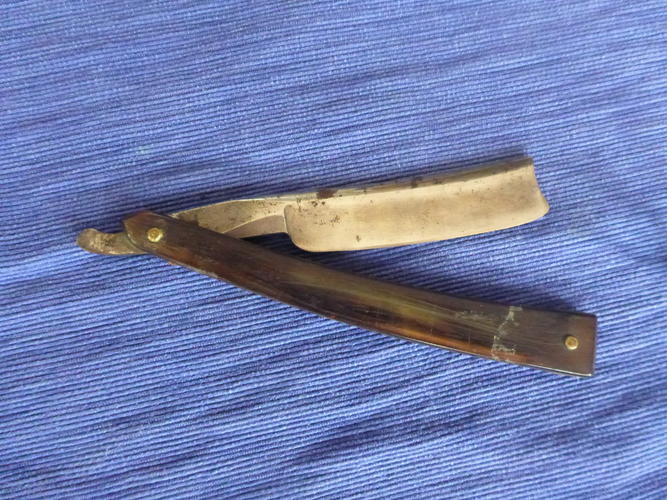
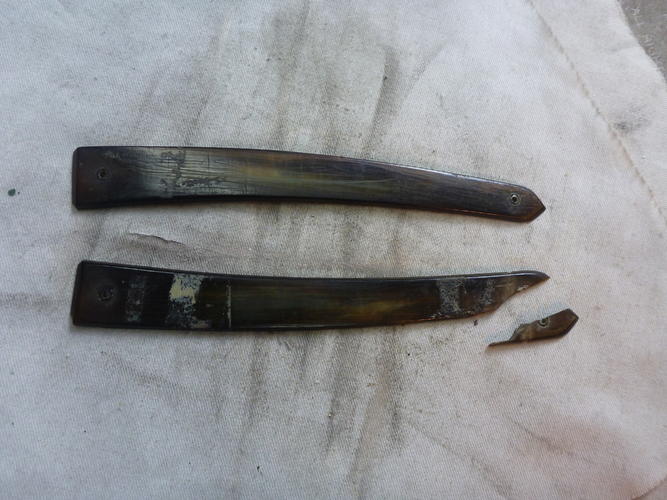
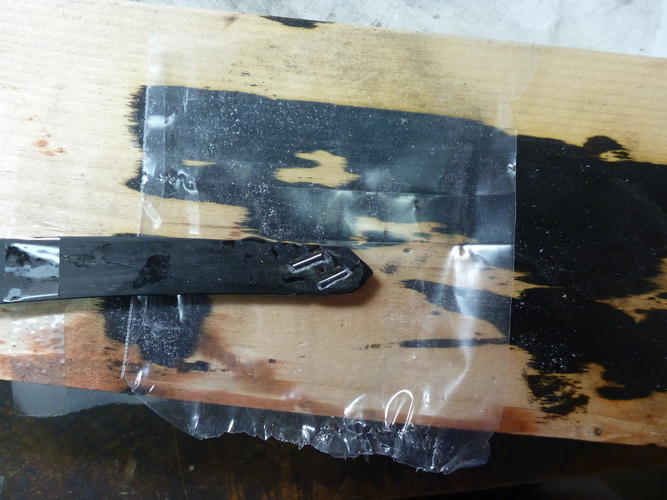
-
The Following 5 Users Say Thank You to karlej For This Useful Post:
Geezer (08-01-2018), MikeT (08-01-2018), Oldnick (08-04-2018), sharptonn (08-03-2018), Voidmonster (07-31-2018)
-
07-27-2018, 10:40 PM #2Truth is weirder than any fiction..


- Join Date
- Jun 2012
- Location
- Land of the long white cloud
- Posts
- 2,946
Thanked: 580
Your workmanship never ceases to amaze...
Into this house we're born, into this world we're thrown ~ Jim Morrison
-
07-31-2018, 05:33 PM #3

Love the 'oldies' Karl...another really nice resto. Great repair job with the pins!
Lupus Cohors - Appellant Mors !
-
07-31-2018, 09:25 PM #4

Looks like a brand new razor. Nice job Karl. As always.
It's just Sharpening, right?
Jerry...
-
07-31-2018, 10:05 PM #5Str8Faced Gent.






- Join Date
- Aug 2013
- Location
- Orangeville, Ontario
- Posts
- 8,453
- Blog Entries
- 1
Thanked: 4207
Superb work, refined to an art nearbouts I’d say!
 "Depression is just anger,, without the enthusiasm."
"Depression is just anger,, without the enthusiasm."
Steven Wright
https://mobro.co/michaelbolton65?mc=5
-
08-01-2018, 01:44 AM #6

That is excellent work! You really brought those scales back to life!
 “You must unlearn what you have learned.”
“You must unlearn what you have learned.”
– Yoda
-
08-01-2018, 02:56 AM #7

Karl great restore as usual. Nice save on the scales. Not sure I understand how you used the two steel pins to reinforce the break. It came out great. Amazing work. Blows me away!
-
08-01-2018, 12:06 PM #8

The pins are inlet into the inside of the scales perpendicular to the break and Brownell's Arceglas dyed black was used to bind them in place. Acragas is great stuff. Impervious to just about anything. I found out early on using hair dye that the dye attacks super glue and Devcon epoxy. I used a lot of it back in my gunsmithing days. Mixed in a 4:1 ratio and can be dyed. The pigment is mixed with the Acraglas. It can't be dyed after it hardens. For small jobs you can use small syringes with the needles removed to get the ratio correct or even drops from a tooth pick. Here is a picture of the powdered dye I use. Enough in this can to last a couple of lifetimes. The dye that comes in the Agraglas kit is liquid nowadays. You can also buy the dye in other colors.
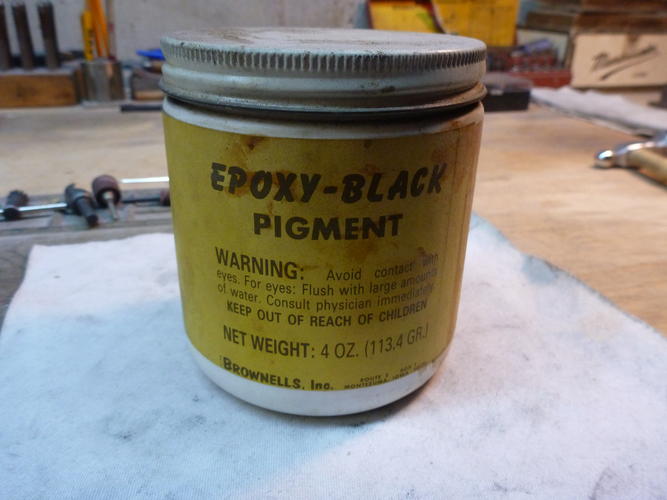
-
The Following User Says Thank You to karlej For This Useful Post:
MikeT (08-02-2018)
-
08-01-2018, 01:05 PM #9

Thanks for your very thorough explanation. Now I understand. This is a museum quality restoration. A small task for a former gun smith no doubt. Thanks again Karl.
-
08-01-2018, 01:33 PM #10Senior Member



- Join Date
- Feb 2015
- Location
- Duluth, GA - Atlanta OTP North
- Posts
- 2,546
- Blog Entries
- 1
Thanked: 315
Great looking razor. Looks too new to be an old razor. Maybe you did too good a job on it.

Thanks for the info. Do you mean the hair dye breaks down the super glue and devcon epoxy?
I do know I tried mixing some Pigment with CA one tine and it caused an exothermic reaction!- Joshua


 45Likes
45Likes LinkBack URL
LinkBack URL About LinkBacks
About LinkBacks







 Reply With Quote
Reply With Quote
